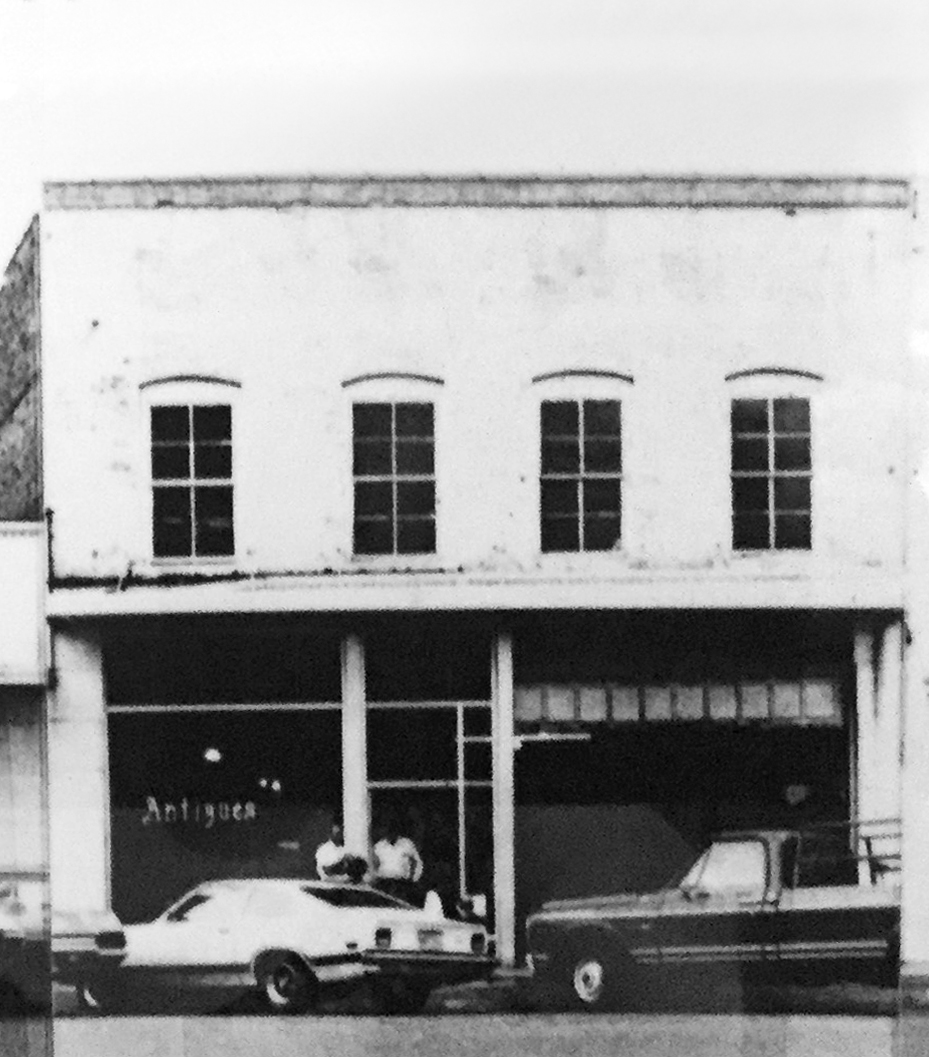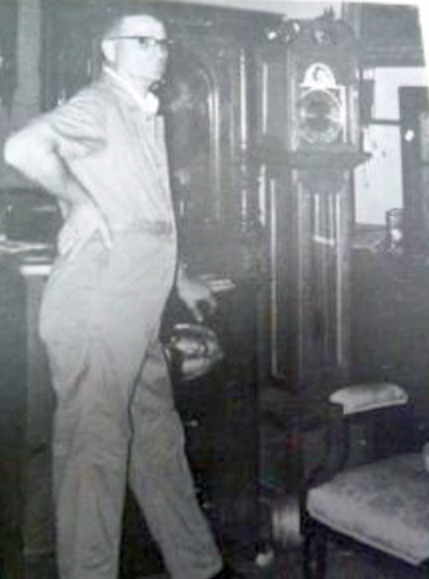Built in 1927, the Benson Building is located at 235-237 South Market Street. It is described as a two-story, painted brick building with glass display windows and one wood and glass paneled loading door on ground floor. The second story features segmental arched windows with concrete sills and stepped cornice along side of building. The building housed the county’s first car dealership, a Ford dealer run by John Benson. The building and the Ford dealership were later sold to the Harbin family and the business continued at this location until Harbin Motors moved to West Willow.
The 235 address in this building was home to the County Surplus Commodity and Distribution Center between 1956 and 1966. This address by 1975 housed Judge Gentry’s antique business. Prior to that, Alvin Metcalf operated a furniture store in the space. Old Hickory Food and Chemicals occupied the right side of the building in the early 1990s, and then annexed left side by 2000 when Judge Gentry’s antiques business closed.
In the 1956 phone book, the 237 address in this building housed the Firestone Tire business before they built first in the location of the new city hall and then at the location of Copeland Tire, across Peachtree Street from the 1956 location. From 1961 to 1970, Western Auto was at this location, having moved from 231 in the Young Building. In 1974, Western Auto moved to the Proctor Building. The space was empty in 1975
It currently has two tenants: N.A.T.A. (Northeast Alabama Training Authority, a baseball practice facility) on the left and Scottsboro Tackle Company, a fishing supply business, on the right.
David Bradford remembers that Great Grandfather John B. Benson used to tell tales of the early days of getting Fords from Detroit to Scottsboro for sale. A group of men rode the train to Detroit in the 1920s and drove the cars back to Alabama over the poor quality roads, though the ad below shows cars being unloaded from a vehicle carrier. The front of the Benson Building still has ramps where cars were could be driven to the second floor for storage.
One of the most enduring businesses in the left half of this building was Judge R. I. Gentry’s Antique Sales and Repair. That shop is shown below in 1975.
Current View: N.A.T.A. and Scottsboro Tackle Company
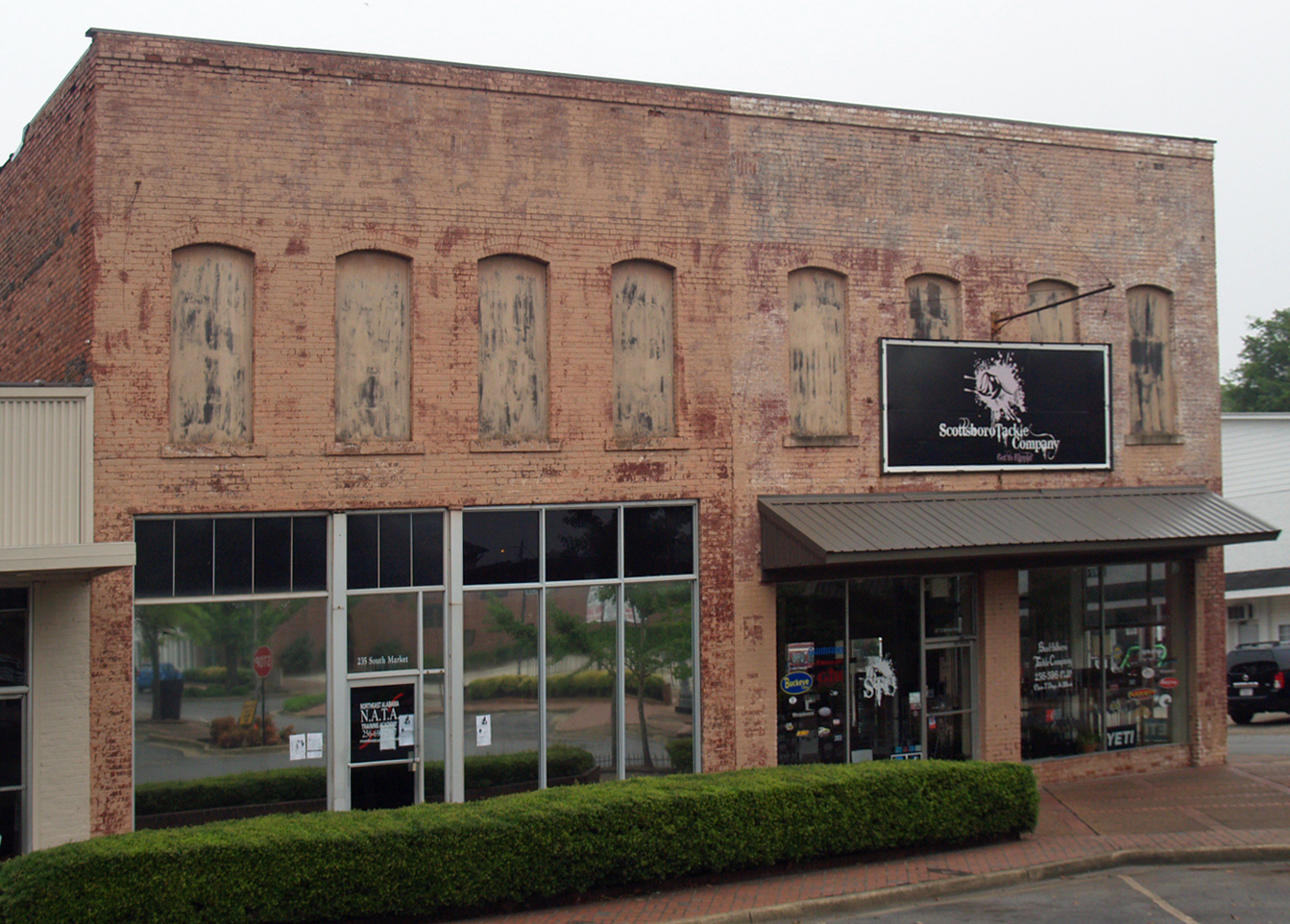
Before the Benson Building was built in 1927
There are several early view of the east side of the square showing the buildings that predated the Benson Building, but this detailed view is the best. It is possible that the building on the left of this pair that was eventually torn down to build the Benson Building in 1927 was a gas station.

Webb Ford becomes Benson and Padgett Ford
Robert Annis Padgett, whose family was from Marion County, Tennessee, already had some experience with businesses on the square. His brother’s hardware business had opened in 1910 and was located, as its ad from the Progressive Age states, by the post office, which would have been in the Bank Building, though it moved to the Proctor Building by the early 1920s. Annis was a mail carrier in the 1910 census, and his older brother James was a dry good merchant. In 1920, Annis was also a dry good merchant, and in 1930, a Ford automobile dealer. By 1940, he had sold his Scottsboro business interests and moved back to Marion County, Tennessee.
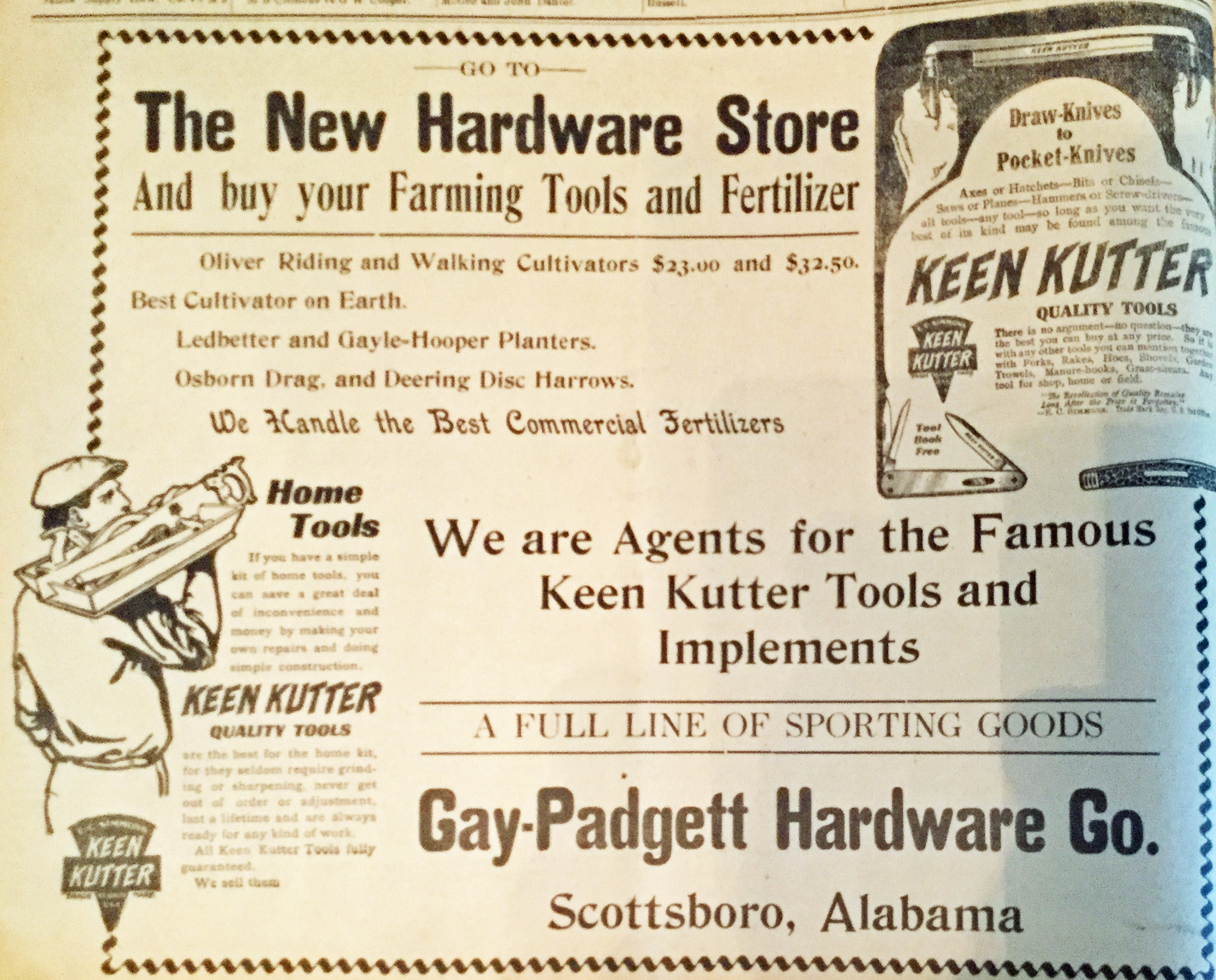
A Ford dealership existed before the Benson Building was built in 1927, though it was owned by W. J. Webb.
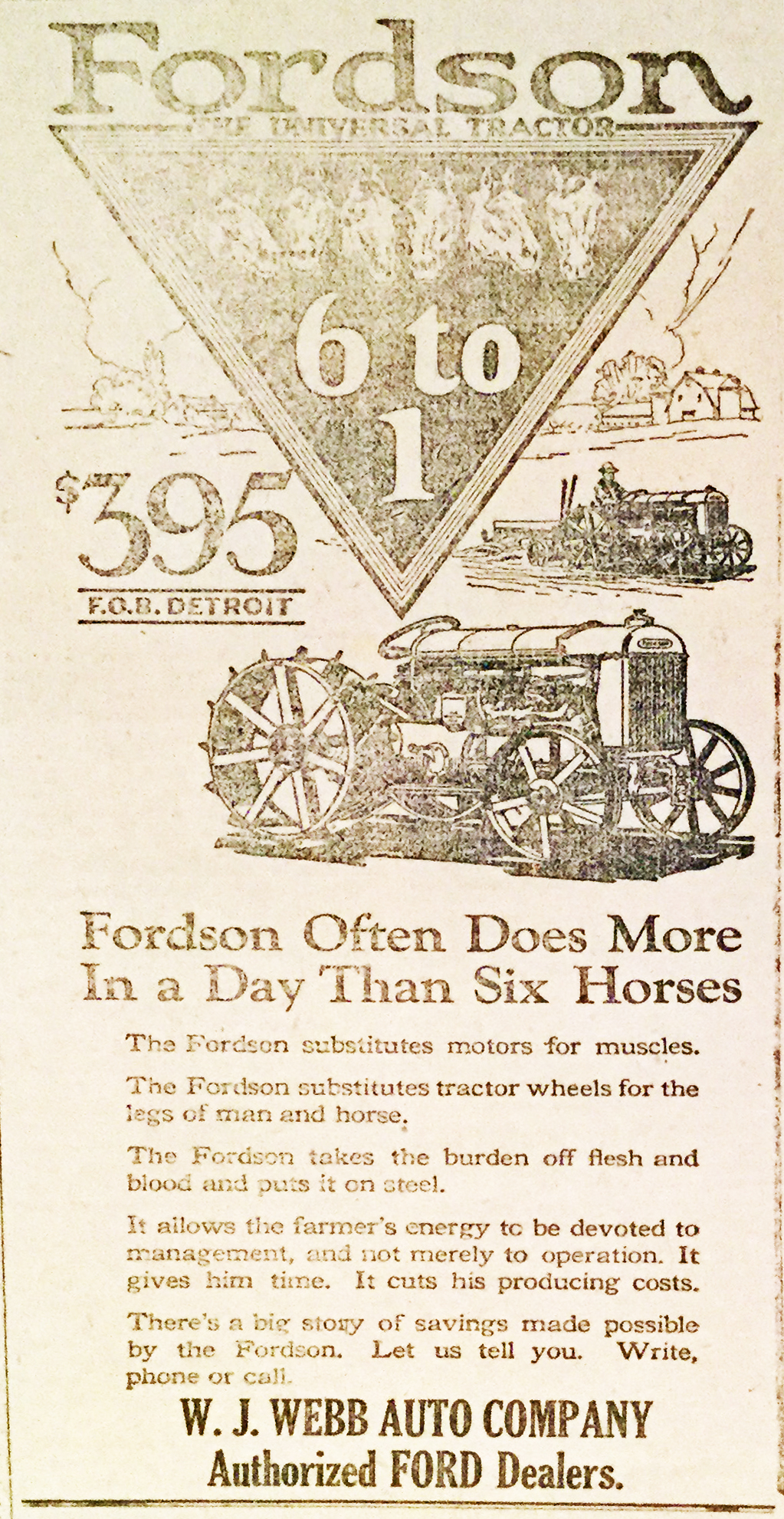
John Benson bought W. J. Webb’s interest in Webb Auto Company in 1923. W. J. Webb was John Benson’s first cousin (his mother Molly Morgan Benson and W. J. Webb’s mother Florence Morgan Webb were sister). His other partner in the business was Robert Annis Padgett, the husband of W. J. Webb’s sister Cloe. In early 1923, The Progressive Age announced that John Benson had bought Mr. Webb’s interest in the Ford Business.
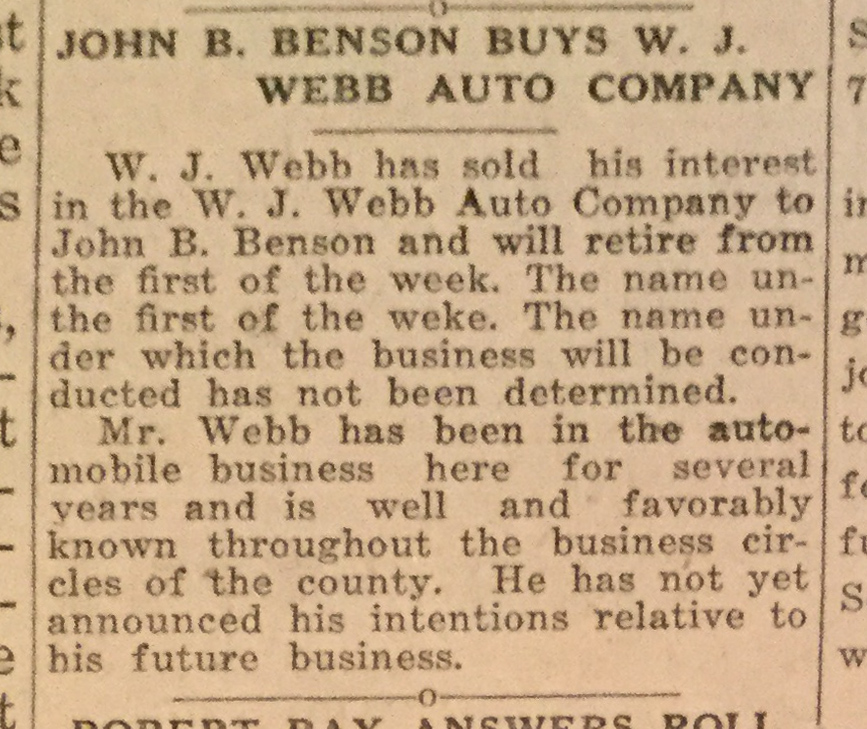
On February 21, 1924, this announcement about the new partnership between Benson and Padgett appeared in The Progressive Age
: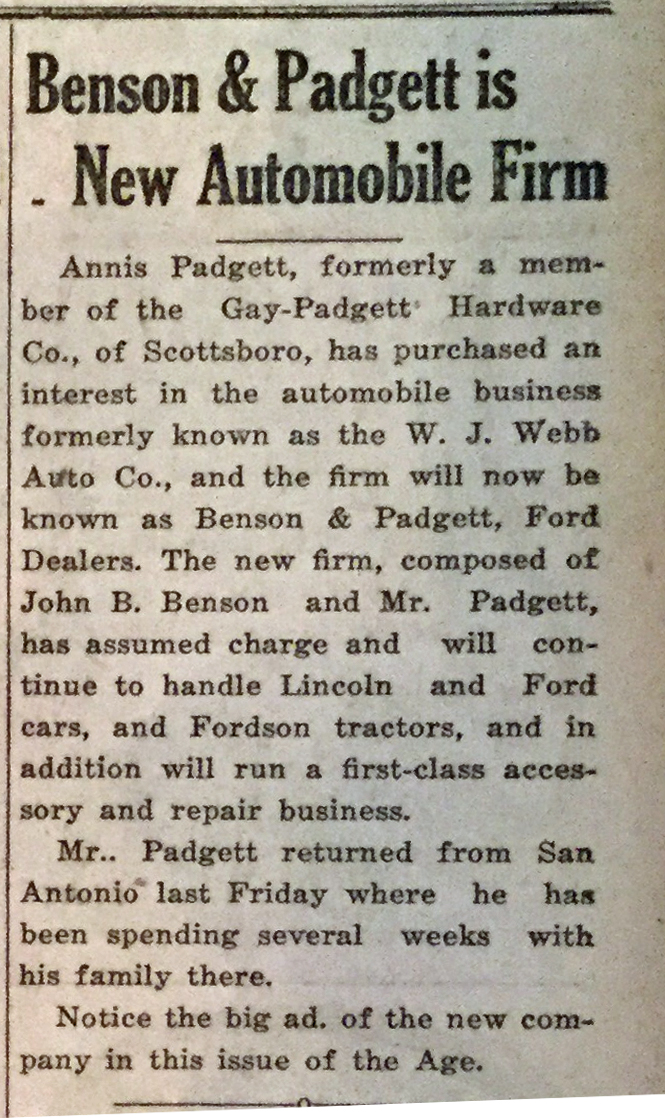
It is likely that Mr. Benson acquired the location for their dealership and partnered with Robert Annis Padgett. They tore down the existing structures and built the Benson Building to house their growing Ford dealership.
No part of the previous buildings seems to have been incorporated into the Benson Building, since the buildings shown in the 1907 photo are very different from the Benson Building photo. Also, Benson grandson David Bradford remembers that the Benson Building had ramps up to the second level, which was strong enough to allow cars to be stored here. The older builders would probably have not been strong enough to enable cars to be parked on the second floor. The Benson Building is also deep, running the entire depth of the block between Market Street and Andrews Street. It is reasonable to conclude that this building was built “from scratch” in 1927, preserving none of the existing structures.
Ford Dealership shortly after it was built in 1927

1930: Benson and Padgett also sold farm equipment
This ad is from the 1930 Progressive Age. The farm equipment part of the Ford business would become part of Benson and Childress Hardware.

Library of Congress WPA photo of Benson Building
One of my favorite Benson Motors shots is from the Library of Congress. It shows these two men sitting in front of the Ford Dealership on the square.
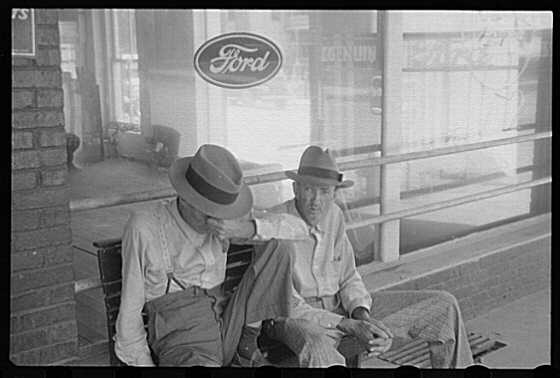
Car delivery to Benson and Padgett
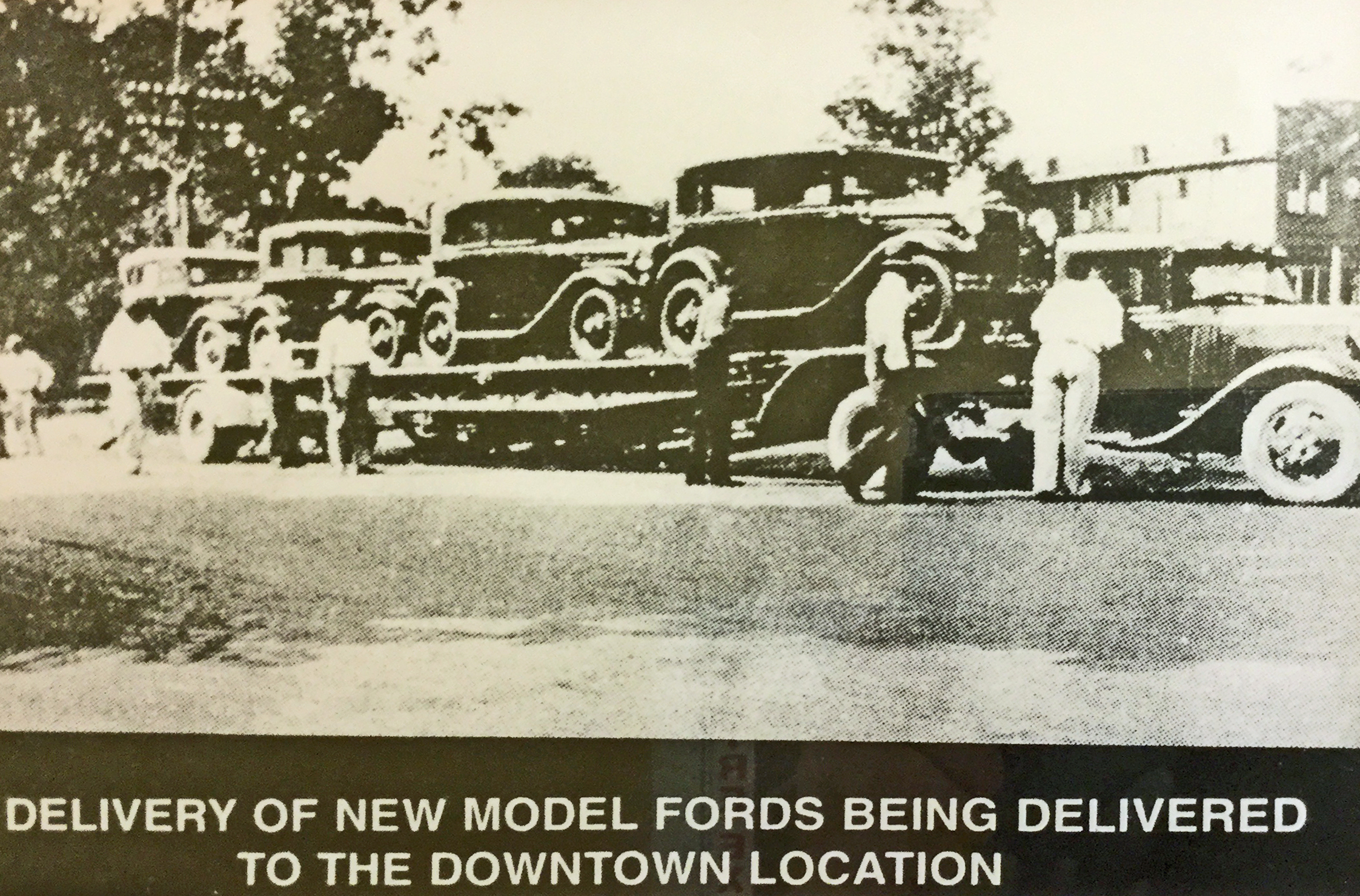
Screen capture of Benson Motors from Bob Word’s 1930 film
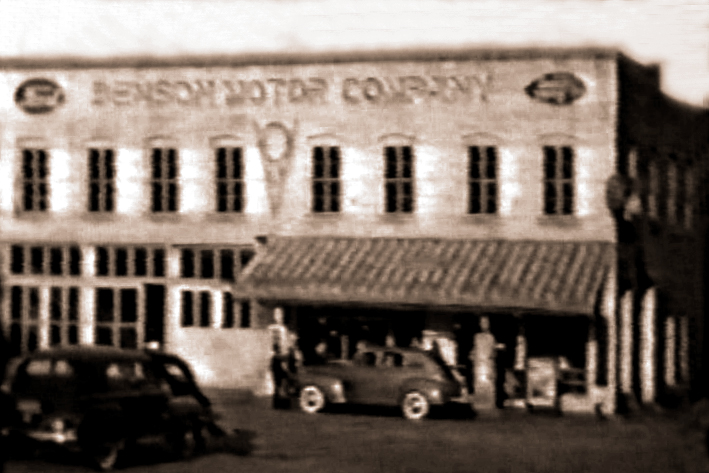
Ads from the 1938 Progressive Age about Benson Motors
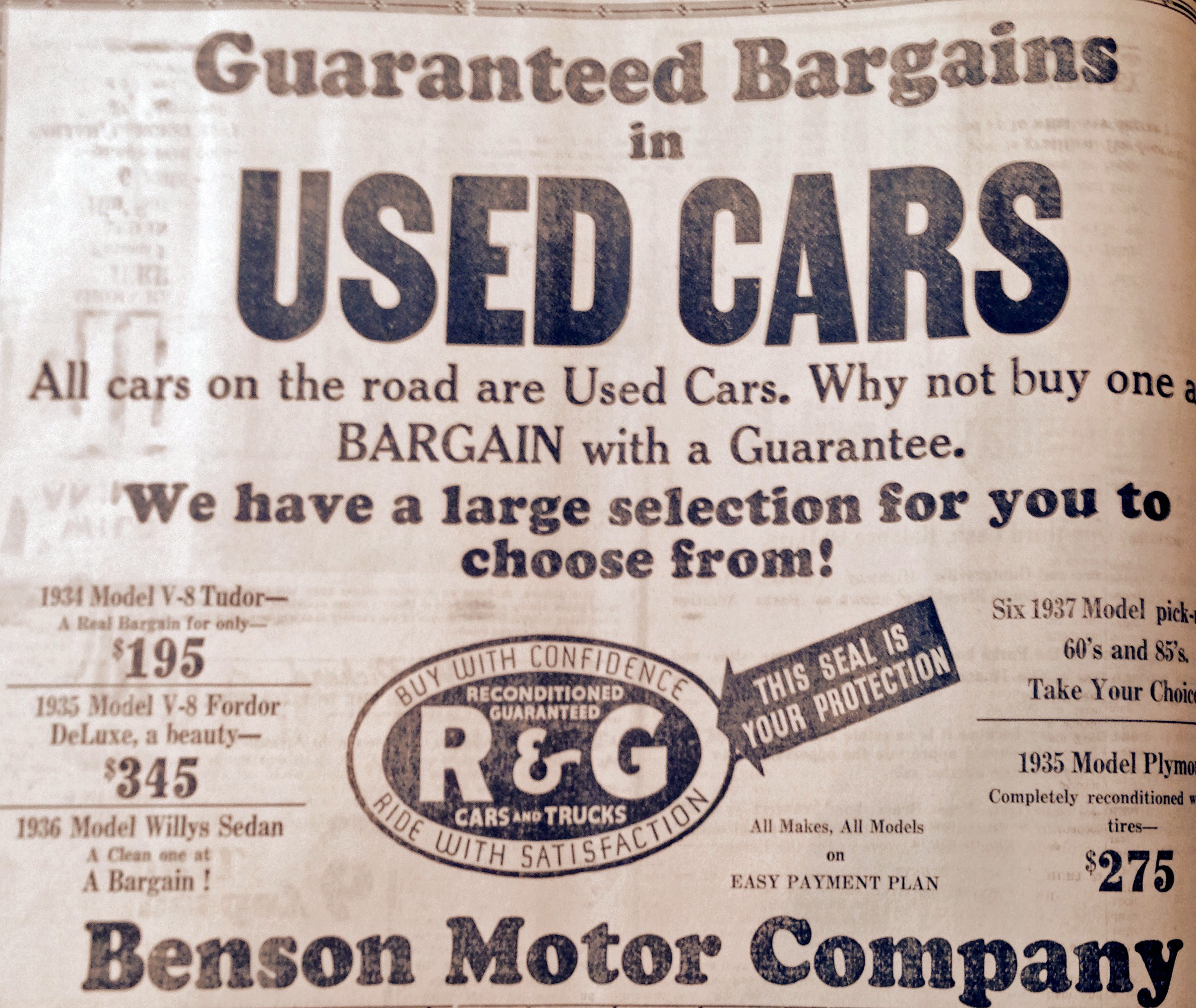

Benson Building after the Harbin family bought the Ford Dealership
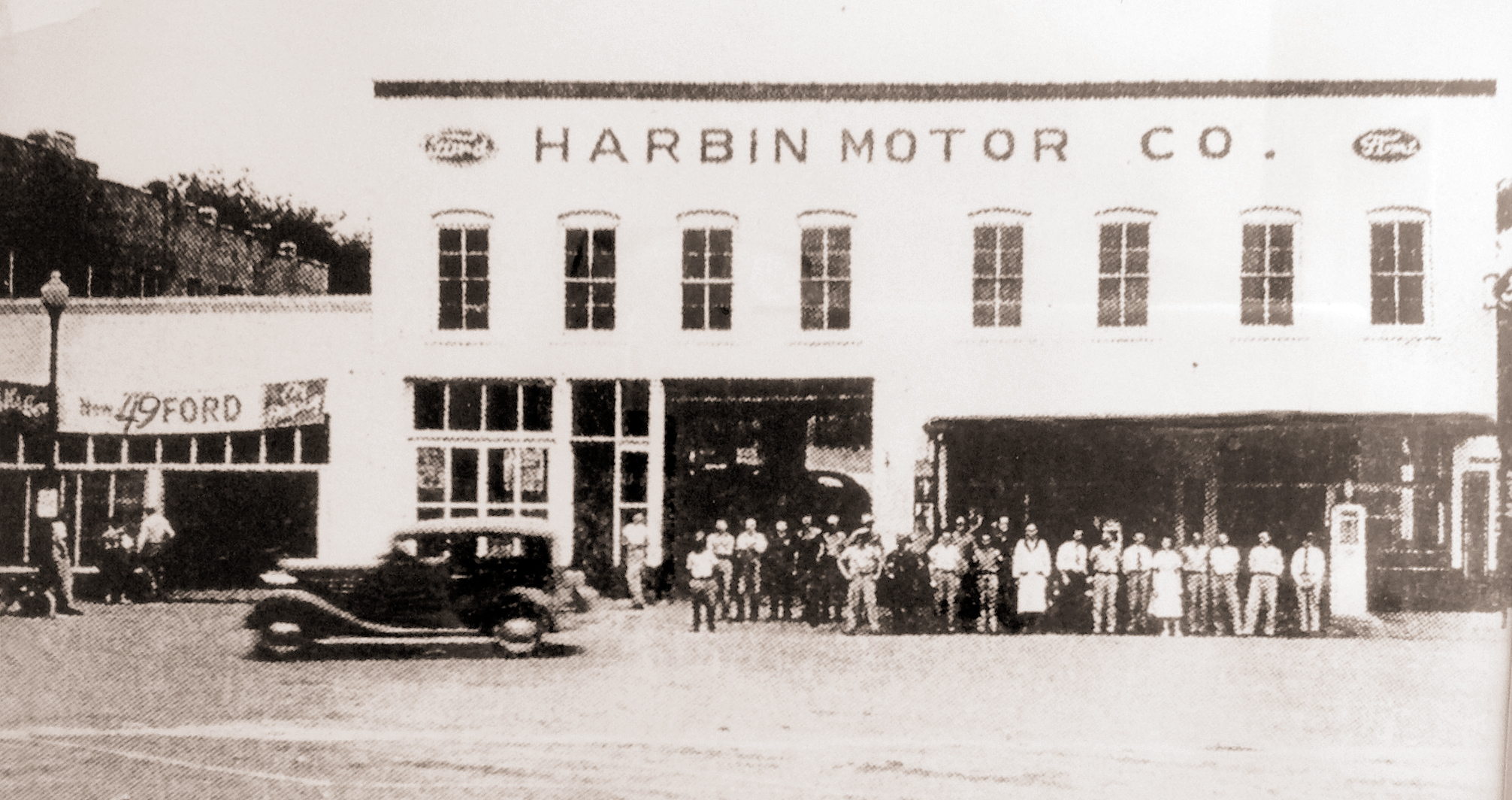
Judge R. I. Gentry’s Antique Shop in 1975 and Judge Gentry
